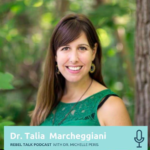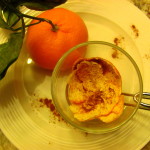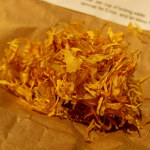Naturopathic doctors employ a variety of healing modalities or, as we like to say, “tools in our toolbox”, to help the body heal itself. One of my favourite healing modalities is acupuncture. While I used to cringe at the thought of spending another 2 hours being poked and prodded by my classmates in acupuncture class I’ve since overcome my fear of needles and have come to embrace the amazing powers of acupuncture to gently restore balance and healing to the body. To pay homage to my favourite modality, I’ve answered some of your burning questions about this ancient healing art.
What is acupuncture?
Acupuncture is an ancient healing art used for 5000 years in China (as a modality of Traditional Chinese Medicine, or TCM), South Korea and Japan. Its theoretical purpose is to balance the flow of energy, or Qi, in the body by inserting, and then manipulating, several thin needles into the body at specific therapeutic points.
Classical Chinese Acupuncture features protocols geared to treating diagnoses that are based on the 5 Elements Theory and the theory of Yin and Yang. Two patients with the same concern, headaches, for example, may be diagnosed with two completely different “Zang Fu” pathologies, as they are called, and treated with a series of completely different acupuncture points. Most of the points will be placed in the lower legs or arms, but points can be located anywhere on the body: the face, abdomen, back, hands and feet. Some acupuncture systems, such as auricular acupuncture, involve needling the inside of the ears exclusively.
How does it work?
According to the ancient Chinese, acupuncture stimulates the meridians of energy, or Qi, that are present in the body. It increases the flow of qi, blood and balances yin and yang, while “tonifying” the major organs on a physical, mental and emotional level.
In Western medicine, however, the mechanism of action of acupuncture is still not well-known. Its effectiveness in pain management, however, is quite well established. Several randomized control trials (RCTs) and meta-analyses have concluded that acupuncture was effective at decreasing pain. Researchers hypothesize that acupuncture may modify physiological pain pathways to the central nervous system, telling our bodies to stop sending pain signals to the brain (Stux et al., 1995). Lin et al (2008) believes that acupuncture may do this by transmitting signals to the segmental levels of the spinal cord, modulating levels of prostaglandins, which are associated with pain and inflammation. Other researchers have found that acupuncture acts by increasing levels of endogenous endorphins, our bodies’ naturally produced “pain killers” (Xiang et al., 2002).
What is acupuncture used for?
Acupuncture’s effectiveness goes beyond pain management. According to Natural Standard Database, acupuncture shows “strong evidence” (level A) for treating osteoarthritis, chronic and post-operal pain, and “good evidence” (level B) for treating fibromyalgia, nausea and vomiting from chemotherapy, showing it may help patients with cancer comply with their treatment regimes. There is conflicting evidence showing its efficacy for a variety of conditions from anxiety, autism and insomnia to increasing the chances of pregnancy with in vitro fertilization treatments, however it has been used clinically for the treatment of these conditions with positive results.
Is acupuncture safe?
Acupuncture is very safe as the needles used in acupuncture are very thin. Side effects are uncommon and minimal, but may include dizziness, anxiety or bruising, pain or slight bleeding at the site of needle insertion. For best safety and efficacy ensure that your practitioner is a certified acupuncturist or naturopathic doctor who has graduated from an accredited institution, such as the Canadian College of Naturopathic Medicine, which requires a minimum number of training hours in therapeutic acupuncture techniques.
What kinds of acupuncture are there?
Traditional Chinese Acupuncture involves placing needles at specific acupuncture points. This is the most common kind of acupuncture and involves the treatment of a “Zang Fu” or Chinese medical diagnosis, involving the use of pulse and tongue for assessment.
Acupressure involves using the fingers, seeds or tacs, rather than acupuncture needles, to stimulate points. This method is less invasive and can be done by inexperienced acupuncturists or by patients at home.
Electrostimulation consists of placing an electrical current on the acupuncture needles to contract or relax muscle and increase blood flow, which is very useful in musculoskeletal conditions such as osteoarthritis.
Some acupuncturists use moxa, intensely heated sticks of Artemesia vulgaris, rather than needles to stimulate points by applying heat from a distance.
Cupping is another acupuncture-like treatment, which involves applying small glass cups to the skin, creating suction to massage deep tissues.
“Western” acupuncture or trigger point release involves inserting acupuncture needles into “trigger points” or areas of pain and muscle tension and breaking up adhesions and areas of muscle spasm and tension. This type of acupuncture acts like a deep massage.
Auricular acupuncture involves placing needles into the ears exclusively to target symptoms of the entire body. The NADA protocol for addictions and detoxification involves placing needles in 5 specific points in each ear.
Community Acupuncture is a practice in which a group of people are needled together, using points located on the legs, arms and abdomen, in order to derive healing energy from the group to increase the benefits of treatment, similar to a yoga or meditation class. These treatments are typically more accessible as they allow acupuncturists and naturopathic doctors to charge less per session, or offer pay-what-you-can rates. The NADA protocol is performed within the context of community acupuncture.
What can I expect from treatment?
Your naturopathic doctor or Traditional Chinese practitioner will begin by asking you a series of questions about your condition, symptoms as well as other questions concerning your temperature, energy levels, digestion, menstrual symptoms or whatever else he or she deems applicable to your case. He or she may also assess and record your tongue and feel the pulse on both your wrists. After assessing you, he or she will select a series of points that are indicated for your individual condition.
The insertion of the points is not usually painful. Most patients will experience a dull aching sensation at the acupuncture point, called de qi sensation, which, according to Traditional Chinese Medicine, indicates that the points are being adequately stimulated energetically.
Acupuncture treatments typically last 20-40 minutes. Most sessions involve lying quietly, on a massage table either face up or down. Patients report various symptoms during and after a typical treatment but most commonly report feeling pleasantly energized, relaxed or balanced. Others claim they experience increased circulation, or “energetic flow” and some describe a pleasant “buzzing” or “humming” sensation in their bodies.
How many treatments do I need?
The amount of treatments needed to treat various conditions depend on a variety of factors including your general health status, your age, the severity of your condition, the length of time you’ve been experiencing symptoms and the presence of other lifestyle factors, such as the quality of your diet, whether or not you exercise and your stress levels. I typically tell patients that it will take them 6-8 weekly sessions to start experiencing lasting results.
How can I prepare for a treatment?
Come to treatments hydrated and having eaten something light 1-2 hours before. Wear comfortable, loose-fitting clothing. After a treatment, ensure you stay hydrated and make an effort to rest after treatment in order to reap the full benefits.
References:
Lin, J., Chen, W. (2008). Acupuncture analgesia: a review of its mechanisms of actions. American Journal of Chinese Medicine. 36(4): 635–645.
Stux, G., Pomeranz, B. (1995). Basics of Acupuncture, 3rd Edition. Berlin: Springer-Verlag.
Xiang, D.F., Situ, Y., Liang, X.F., Chen, L., Zhang, G.L. (2002). Auricular acupuncture for 37 cases of dysmenorrhea due to endometriosis. Journal of Traditional Chinese Medicine. 2 (4): 282-285.






